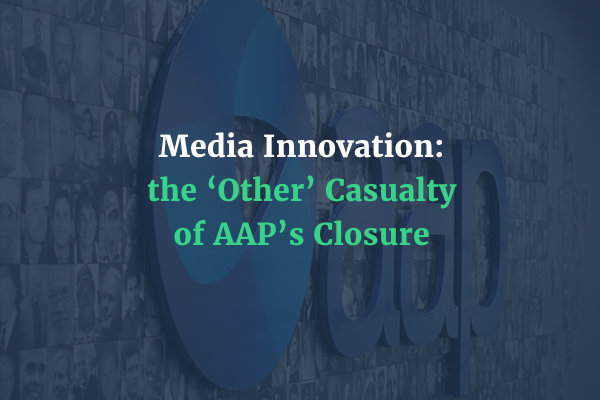Media Innovation: the ‘Other’ Casualty of AAP’s Closure

In the news business, news agencies have long been a publisher’s secret weapon. Always present but rarely seen, the news “wire” has been a source of impartial, trustworthy copy for nearly 175 years. What began as a cooperation between publishers during the Mexican American War has since become a ubiquitous part of the global media landscape.
So, what happens when a news agency disappears? That’s a question many media watchers have been pondering since Nine Entertainment and News Corp Australia decided to shutter the Australian Associated Press after 85 years in operation. And, as an AAP technology partner, it’s a question that we’ve been thinking a lot about, too.
Local coverage is the obvious first casualty. For newspapers around the world, many of which are already strained by diminished resources, news holes grow when wire services scale back. According to research conducted by a University of Illinois media professor, half of all stories published online in 2010 by The New York Times, the Chicago Tribune, and the Oregonian were written by wire reporters. It stands to reason, then, that when a news agency disappears, so, too, does the news.
But there is a less obvious victim when news agencies are no longer part of the ecosystem: media innovation. News agencies have been among the industry leaders in efforts to reinvent outdated business models with new products and services. This has been especially true at AAP, where projects like AAP FactCheck, a platform established with funds from Facebook to investigate the accuracy of public statements, and AAP Studio, a content and design service, were both built to broaden the agency’s commercial offerings. The fate of both initiatives is now unclear.
The AAP has also worked to innovate through technological collaboration, a form of partnership that we know well. Superdesk, our open-source headless CMS for the news media, would not exist without AAP’s contributions. Before our tie-up in 2013, Superdesk was only a prototype. Today, it powers the operations of press wires and publishers around the world, producing over 375,000 items of content and reaching over 100 million readers every day.
Moreover, since the launch of Superdesk in early 2016, AAP has been instrumental in creating extensions to further improve workflows and newsroom efficiency. These open-source projects include the Newshub customer portal, the Planning component, and the Superdesk Analytics module. Thanks to our partnership with AAP, all of these tools are free for any newsroom to use.
To be sure, collaborative news agency innovation is not unique to AAP. For example, a group of six European news agencies – led by the Dutch agency, ANP – is currently working to develop a system for data-driven publishing to analyse what content users find most engaging. Another initiative between the German news agency Deutsche Presse-Agentur and STT, the Finnish news agency, aims to use data to help news agencies track and match content to reader preferences.
And yet, AAP has proven itself a consistent media tech visionary. Wolfgang Nedomansky, the Managing Director of MINDS International, one of the world’s leading networks of news agency CEOs, CTOs, editors, and business professionals, says that if the Australian agency is not saved from closure, it will be a significant blow to the industry’s ability to innovate digitally.
"I was recently in Sydney for a MINDS conference, where MINDS members spent a full day at the AAP offices, learning about all the new projects and products the news agency was planning to launch," Nedomansky said. "AAP has long been an excellent example of an agency that was developing new things and coming up with new ideas" that have a broader impact on the news ecosystem.
"For instance, to invest money in a robust fact-checking operation during this period of so-called fake news, that was something that was a benefit for everyone in the media, and for the public as well." AAP’s closure will mean the loss of a leader in newsroom tech partnerships, just when the industry needs these types of programs most, he added.
Sourcefabric Managing Director Sava Tatić concurred: AAP’s closure is "a blatant example of myopic commercial reasoning trampling on the public interest. It’s an utter shame, not only for our friends and partners at AAP and the smaller media outlets they serve, but also for everyone in the news business that benefited from AAP’s vision. News is the backbone of democracy, and technology is the backbone of news. AAP understood that equation better than most."
